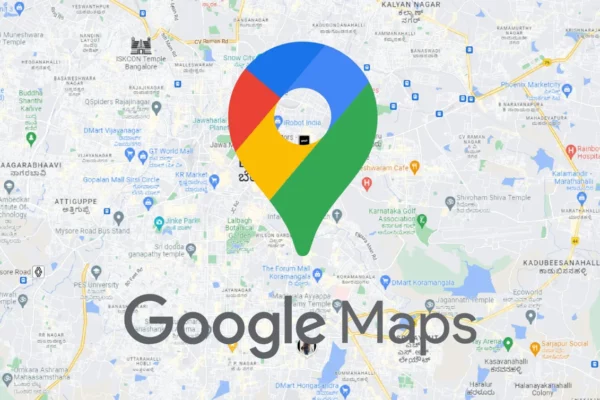Introduction
Uber, the global ride-hailing giant, has emerged as a transformative force in the transportation industry, fundamentally altering the way people move around cities. Since its inception in 2009, Uber has rapidly expanded its reach and influence, revolutionizing the concept of mobility by introducing an innovative on-demand, peer-to-peer ride-sharing platform. In this article, we will explore the genesis, growth, challenges, and impact of Uber on the transportation landscape and how it has shaped the future of mobility.
I. The Birth of Uber
The idea behind Uber was conceived in 2008 by Travis Kalanick and Garrett Camp when they struggled to find a taxi in Paris. They saw the potential of leveraging the ubiquity of smartphones and GPS technology to create a more efficient and convenient transportation solution. Thus, Uber was born as a simple app that connected riders with drivers, providing an alternative to traditional taxis.
II. The Rise of the Ride-Hailing Giant
Uber’s exponential growth was fueled by several factors:
- Technological Innovation: Uber’s user-friendly app provided an accessible platform for riders to hail rides and for drivers to offer their services. The app’s real-time tracking, cashless payments, and seamless user experience set a new standard for the transportation industry.
- Disruption of Traditional Taxi Services: Uber’s competitive pricing, faster response times, and ease of use drew many riders away from traditional taxis, causing significant disruption in the taxi industry.
- Global Expansion: Uber’s aggressive expansion strategy allowed it to enter markets across the globe quickly. This rapid expansion contributed to its ubiquity and widespread popularity.
- Benefits for Drivers: Uber offered flexible working hours and an opportunity for individuals to earn income as independent contractors, attracting a vast pool of drivers to join the platform.
III. Uber’s Impact on Urban Mobility
- Improved Accessibility: Uber has made transportation more accessible for individuals who previously faced difficulties in reaching their destinations, such as those living in remote areas with limited public transport options or people with mobility challenges.
- Reduced Car Ownership: As an affordable and convenient alternative to owning a personal vehicle, Uber has contributed to a decline in private car ownership in some urban areas, leading to reduced traffic congestion and greenhouse gas emissions.
- Dynamic Pricing and Surge Pricing: Uber’s dynamic pricing algorithm adjusts fares based on demand, ensuring that drivers are available during peak times. While this optimizes efficiency, it has also faced criticism during times of high demand for steep surge pricing.
IV. Challenges and Controversies
Despite its remarkable success, Uber has faced a series of controversies and challenges:
- Regulatory Issues: Uber’s rapid expansion often collided with local regulations and licensing requirements, leading to legal battles and clashes with taxi unions in various cities.
- Safety Concerns: Uber has faced criticism and legal challenges related to driver background checks, passenger safety, and reported incidents of assaults during rides.
- Labor Disputes: The classification of drivers as independent contractors rather than employees has resulted in lawsuits and debates over worker rights and benefits.
- Ethical Concerns: Uber has faced scrutiny over its corporate culture, privacy policies, and data handling practices, leading to a series of leadership changes and efforts to rebuild its image.
V. Uber’s Diversification Efforts
In response to the challenges and to broaden its offerings, Uber diversified its services:
- Uber Eats: Launched in 2014, Uber Eats allowed the company to expand into the food delivery market, capitalizing on the growing trend of online food ordering and delivery.
- Uber Freight: This platform connects shippers with carriers, streamlining the logistics and trucking industry.
- Uber Elevate: Uber’s ambitious project aims to introduce aerial ride-sharing using electric vertical takeoff and landing (eVTOL) aircraft, potentially revolutionizing urban air transportation.
VI. Uber’s Competition and Industry Landscape
Uber’s dominance in the ride-hailing space has led to fierce competition with other companies, such as Lyft, Didi Chuxing, and Ola. Additionally, the rise of electric scooters, bike-sharing programs, and autonomous vehicle technology has further shaped the mobility landscape, leading Uber to invest in these emerging technologies to stay ahead.
VII. The Future of Uber and Mobility
As Uber continues to evolve, the future of mobility presents both opportunities and challenges:
- Autonomous Vehicles: Uber has invested heavily in autonomous vehicle research, aiming to integrate self-driving cars into its fleet. The widespread adoption of autonomous vehicles could revolutionize the transportation industry but also raises questions about safety and job displacement.
- Sustainable Mobility: To address environmental concerns, Uber has pledged to transition to a fully electric fleet in some cities by 2030, aligning with global efforts to combat climate change.
Conclusion
Uber’s transformative impact on the transportation industry cannot be overstated. Its disruptive business model has reshaped urban mobility, making it more convenient and accessible for millions worldwide. Nevertheless, Uber’s journey has been tumultuous, marred by controversies, regulatory battles, and labor disputes. As the company continues to innovate and navigate through challenges, the future of Uber and the broader mobility landscape remain dynamic and ever-evolving.











Leave a Reply
You must be logged in to post a comment.